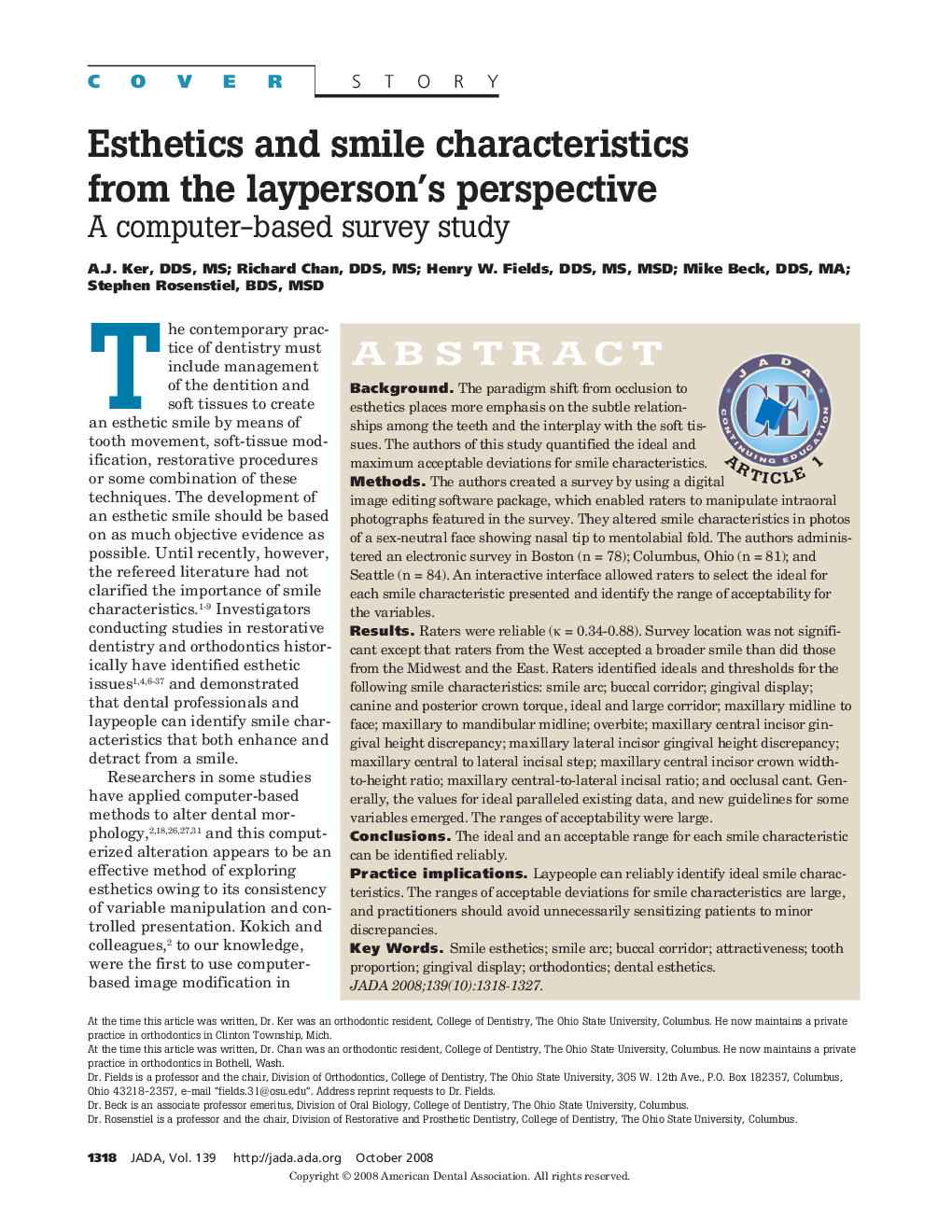| Article ID | Journal | Published Year | Pages | File Type |
|---|---|---|---|---|
| 3139174 | The Journal of the American Dental Association | 2008 | 10 Pages |
ABSTRACTBackgroundThe paradigm shift from occlusion to esthetics places more emphasis on the subtle relationships among the teeth and the interplay with the soft tissues. The authors of this study quantified the ideal and maximum acceptable deviations for smile characteristics.MethodsThe authors created a survey by using a digital image editing software package, which enabled raters to manipulate intraoral photographs featured in the survey. They altered smile characteristics in photos of a sex-neutral face showing nasal tip to mentolabial fold. The authors administered an electronic survey in Boston (n = 78); Columbus, Ohio (n = 81); and Seattle (n = 84). An interactive interface allowed raters to select the ideal for each smile characteristic presented and identify the range of acceptability for the variables.ResultsRaters were reliable (κ = 0.34–0.88). Survey location was not significant except that raters from the West accepted a broader smile than did those from the Midwest and the East. Raters identified ideals and thresholds for the following smile characteristics: smile arc; buccal corridor; gingival display; canine and posterior crown torque, ideal and large corridor; maxillary midline to face; maxillary to mandibular midline; overbite; maxillary central incisor gingival height discrepancy; maxillary lateral incisor gingival height discrepancy; maxillary central to lateral incisal step; maxillary central incisor crown width-to-height ratio; maxillary central-to-lateral incisal ratio; and occlusal cant. Generally, the values for ideal paralleled existing data, and new guidelines for some variables emerged. The ranges of acceptability were large.ConclusionsThe ideal and an acceptable range for each smile characteristic can be identified reliably.Practice implicationsLaypeople can reliably identify ideal smile characteristics. The ranges of acceptable deviations for smile characteristics are large, and practitioners should avoid unnecessarily sensitizing patients to minor discrepancies.
